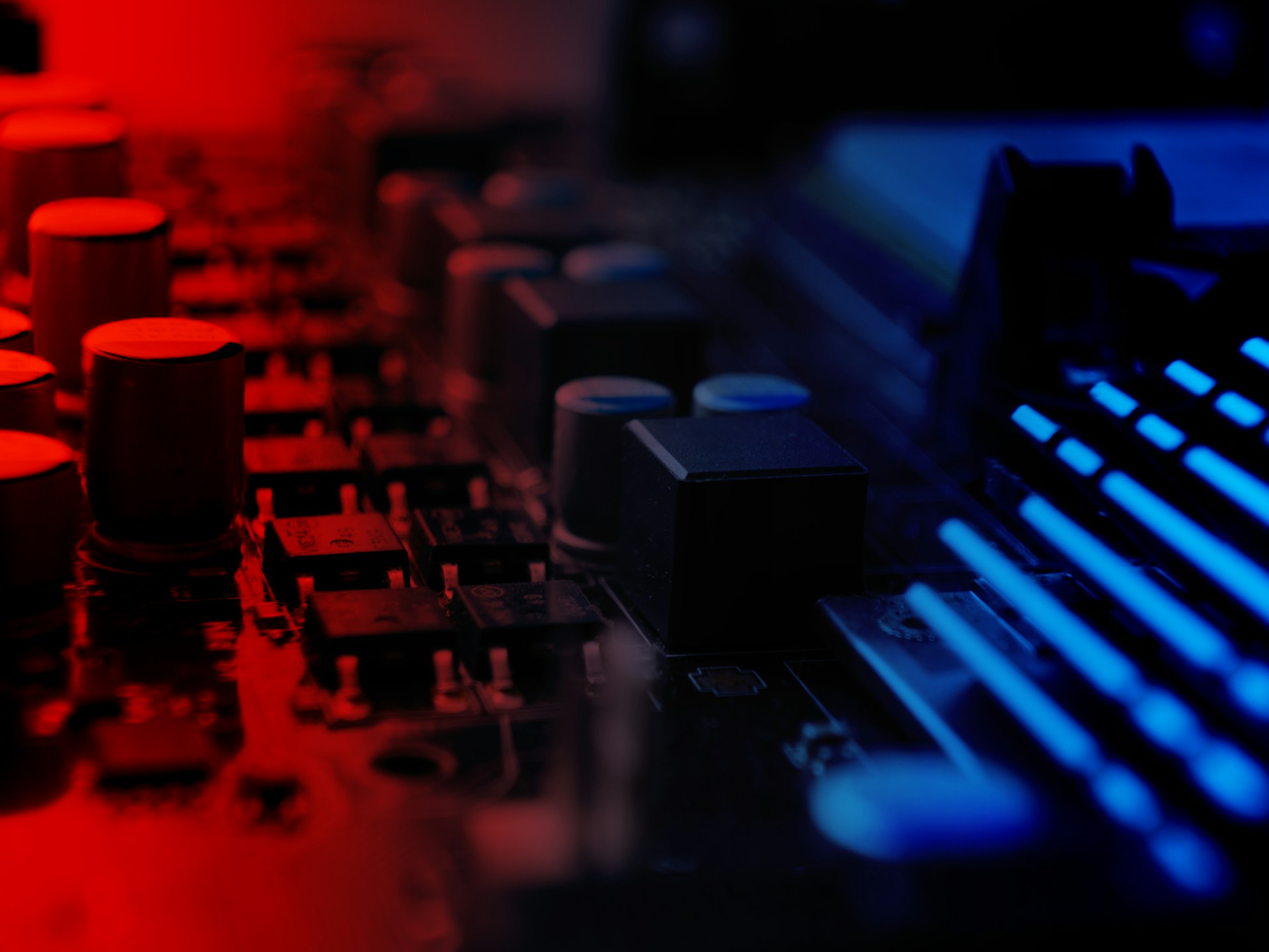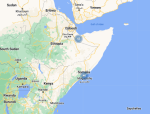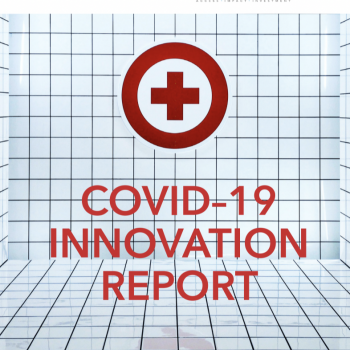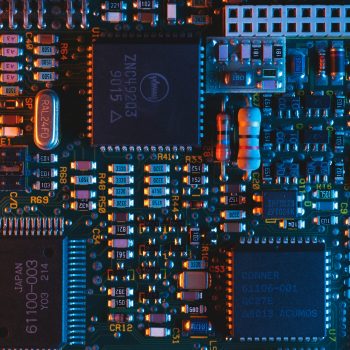The Hardware & IoT startup industry is one of the most promising industries in Asia due to the region’s strength in manufacturing, hosting major players such as Samsung and TSMC, as well as its robust infrastructure, favorable investment climate, and a strong ecosystem of innovation that continually drives technological advancements and attracts global talent. In the global leaderboard for Hardware & IoT, 5 out of 10 cities are from Asia, reflecting the region’s strength in the industry. Yet, the industry holds a smaller share of startups and funding compared to other key sectors such as Healthtech, Software & Data, and Fintech. This article highlights the state of the Hardware & IoT industry in Asia. For a deeper understanding of these trends and access to comprehensive data on 100+ tech markets and 1,000+ startup ecosystems, explore StartupBlink Pro.
Key Highlights from Asia’s Hardware & IoT Startup Industry
➡️ Hardware and Consumer Electronics Dominate the Sector
These sub-industries attract nearly 60% of funding and 48% of Hardware & IoT startups in Asia, reflecting strong investment aligned with startup activity.
➡️ East Asia’s Dominance in Hardware & IoT
East Asia captures 92% of all funding and hosts 70% of the region’s Hardware & IoT startups in Asia. Beijing, Shenzhen, and Tokyo lead with established ecosystems and robust investment networks.
➡️ Taiwan Leads the Hardware & IoT Market
Powered by its world-class semiconductor and manufacturing industries, Taiwan ranks as the top country in Asia for Hardware & IoT.
➡️ Fierce Competition Among Chinese Cities
Beijing, Shenzhen, and Shanghai are in a tight race at the top. Outside China, Tokyo, Seoul, Taipei City, and Singapore City are the leading non-Chinese ecosystems.
Asia’s Hardware & IoT Industry Overview
Compared to other major industries like Fintech, Software & Data, and Healthtech, Hardware & IoT has a relatively smaller number of startups and less funding. The industry is dominated by sub-industries such as Hardware and Consumer Electronics, which capture the majority of the funding and startup activity.
Hardware & IoT’s share of startups and funding in Asia reflects High Barriers to Entry to the Industry
Hardware & IoT has a relatively smaller share of startups and funding compared to other key industries in Asia. However, the close alignment between the percentage of startups and the percentage of funding indicates that these startups have access to resources proportionate to their presence in the sector. Unlike in Software & Data, where funding significantly exceeds the number of startups, funding in Hardware & IoT closely matches the number of startups. This balance suggests that while the sector is smaller, it receives adequate funding relative to its needs. The sector’s higher barriers to entry—requiring more capital, resources, and specialized expertise— contributes to it having less startups but it also means that growth is steadier and more proportional compared to sectors like Software & Data, where launching a startup is generally easier.
Hardware & Consumer Electronics are the largest sub-industries in Asia.
The Hardware and Consumer Electronics sub-industries dominate both funding and the number of startups within Asia’s Hardware & IoT sector. Hardware alone accounts for nearly 40% of funding and about 25% of all industry startups in Asia, indicating that this sub-industry receives substantial investment proportional to its size. Similarly, Consumer Electronics receives close to 20% of funding while representing around 23% of startups, reflecting a closely aligned distribution.
Sub-industries like Robotics and Internet of Everything receive a smaller percentage of overall funding compared to Hardware and Consumer Electronics. However, their share of funding is still relatively close to their share of startups, indicating proportional allocation in these growing fields. For example, Robotics represents nearly 7% of funding and about 6% of startups.
Smart Home, Nanotechnology, and Smart Cities stand out as underfunded sub-industries with very small shares of both startups and funding. These sub-industries receive less than 1% of total funding while accounting for minimal startup activity, reflecting an early-stage growth.
Although most sub-industries show a proportional relationship between funding and the number of startups, certain niche areas like 3D Printing and Smart Home show a slight mismatch. For instance, 3D Printing accounts for 2.6% of funding but represents about 6% of startups, indicating that while there is startup activity, investment may be lagging behind.
Make informed decisions on industries by diving into the data of hundreds of tech markets with StartupBlink Pro.
Sub-Region Analysis of the Hardware & IoT Startup Industry
We analyzed the sub-regions of Asia in terms of the percentage of funding, percentage of startups, and the number of ranked cities within the Hardware & IoT industry to identify regional strengths and disparities in ecosystem development. The analysis clearly showed that East Asia is the dominant force, capturing nearly 92% of funding, hosting 70% of startups, and featuring most of the top-ranked cities. This reflects the region’s mature infrastructure, strong talent pool, and established hubs like Beijing and Tokyo. In contrast, South Asia has a broad presence with many ranked cities and nearly 19% of startups, but it lags in funding, indicating a gap between the scale of its ecosystems and investment levels. South East Asia, with about 13% of startups, focuses on fewer but well-supported ecosystems like Singapore, which drives competitive growth despite the region’s smaller footprint. Central Asia remains underdeveloped with minimal startup activity, underscoring the significant disparities in ecosystem maturity across the continent.
East Asia Captures Over 90% of Asia’s Hardware & IoT Startup Funding
Hardware & IoT ecosystems in Asia are heavily skewed towards East Asia, which not only accounts for 91.9% of total funding but also hosts the majority of top-ranked cities. Powerhouses like Beijing, Shenzhen, and Shanghai lead the rankings, supported by other significant hubs such as Tokyo and Seoul. This dense concentration of high-ranking cities explains the region’s dominance in attracting venture capital and driving innovation. In contrast, South Asia has a broader presence with numerous ranked cities, including Bangalore, Mumbai, and New Delhi. However, despite representing 24.1% of the ranked ecosystems, South Asia captures only 5.9% of funding, highlighting a gap between the number of ecosystems and the level of investment they attract. This suggests that while South Asia is growing, it faces challenges in scaling its ecosystems to reach the funding levels seen in East Asia.
South East Asia, though hosting fewer ranked cities demonstrates a more focused approach. Cities like Singapore and Kuala Lumpur lead the charge, driving substantial impact despite their limited numbers. Singapore’s performance, in particular, illustrates how a targeted strategy can maximize funding efficiency, allowing the region to remain competitive even with a smaller ecosystem. On the other hand, Central Asia remains largely underdeveloped in this sector, with negligible funding and no ranked cities, underscoring the vast disparity in ecosystem maturity across Asia.
Generate powerful insights like these with the data queries available to StartupBlink Pro users, enabling you to discover emerging opportunities in the innovation landscape.
Almost 70% of Asia’s Hardware & IoT startups are in East Asia.
East Asia’s strong concentration of startups solidifies its position as the region’s innovation hub. With a well-established infrastructure, abundant talent, and robust investment networks, it remains the go-to destination for entrepreneurs and investors. In contrast, South Asia hosts a substantial number of startups but struggles to convert this presence into corresponding levels of funding and ecosystem growth. The region has clear potential but will need strategic efforts to bridge the funding gap and scale its ecosystems. South East Asia takes a more focused approach, supporting fewer startups but maximizing resources and funding efficiency. Meanwhile, Central Asia’s minimal startup activity highlights the significant disparity in ecosystem maturity across Asia, as it remains largely disconnected from the broader tech growth seen elsewhere in the continent.
Access to a list of 150,000+ startups with StartupBlink Pro to identify key players and trends across 1,000+ locations and 100+ industries.
East Asia Dominates as the Leading Sub-Region for the Number of Cities ranked in Hardware & IoT
East Asia clearly leads the Hardware & IoT sector in Asia with the most dominant and well-ranked ecosystems. Out of the top 10 cities, 8 are from East Asia, including major hubs like Beijing, Shenzhen, Shanghai, Tokyo and Taipei City. On the other hand, South East Asia is characterized by a few high-performing ecosystems that punch above their weight. While it has fewer cities ranked overall, the sub-region’s focus on key cities like Singapore gives it a competitive edge.
South Asia has 10 cities ranked, but most of them are in the lower half of the list. The highest-ranked city, Bangalore (9th), is followed by cities like Mumbai (11th) and New Delhi (15th), but the rest of the region’s ecosystems are struggling to rise in the rankings. Unlike East Asia, where the growth is more balanced, or South East Asia, where it is concentrated, South Asia’s growth is dispersed across many cities, leading to lower overall performance. Cities like Ahmedabad, Pune, and Coimbatore are emerging, but they lack the critical mass of innovation and investment needed to challenge higher-ranked ecosystems.
Gain deep insights into 1,000+ startup ecosystems across hundreds of industries with StartupBlink Pro, empowering your location-related decisions.
Best Places for Hardware & IoT Startups in Asia
Based on our analysis of industries using dozens of parameters to identify which locations excel in specific sectors, Asia accounts for 17% of all cities globally in the Hardware & IoT industry, as well as 15.2% of all ranked countries for this sector. Below, we have listed the top cities and countries that empower Asia’s Hardware & IoT industry.
Top Cities for Hardware & IoT Startups in Asia
A Fierce Competition among the Chinese Cities: Beijing, Shenzhen and Shanghai
The top spots in Asia’s Hardware & IoT industry are dominated by three Chinese cities: Beijing, Shenzhen, and Shanghai. The fierce rivalry between Beijing and Shenzhen persists, with Beijing now taking the lead. However, the score gap between them is less than 10%, meaning another shift in rankings could easily happen next year. Meanwhile, Shanghai is steadily closing in, reducing its gap with Shenzhen from around 30% last year to just 12%, signaling that it’s becoming a stronger contender in this competitive environment.
Will Tokyo Break into the Top 3 Despite Rising Competition?
Tokyo retains its 4th position in the Hardware & IoT rankings, showing remarkable stability in a rapidly changing landscape. Despite significant movements from cities like Seoul and Singapore, Tokyo’s unchanged ranking indicates a well-established and resilient ecosystem. In terms of total score, Tokyo remains closely behind Shanghai, with only a 9% gap. This close competition suggests that Tokyo is still very much in the race for a top 3 position, especially if it can accelerate growth in Hardware & IoT innovation.
Seoul joins Asia’s Top 5 for Hardware & IoT
Seoul’s entry into the top 5 in 2024 marks significant progress, as it has successfully reduced the score gap with Tokyo from 31% last year to 24.1% this year. This improvement highlights Seoul’s advancing ecosystem and increasing competitiveness. Now, Seoul is in a highly contested segment of the Hardware & IoT rankings in Asia, with Taipei City close behind, separated by less than a 4% score difference. This underscores the intense competition Seoul faces as it sets to maintain its position in the top tier.
Taipei City’s Competitive Edge in Hardware & IoT Outshines Broader Rankings
Taipei City has long been a key player in the Hardware & IoT sector, thanks to Taiwan’s strong foundation in manufacturing and technological innovation. Currently ranked 6th, Taipei is in a tight race with Seoul, separated by less than a 4% difference in their scores. What makes Taipei’s performance even more impressive is that its rank in this industry is 7 spots higher than its overall standing in Asia across all sectors. This clearly shows that Taipei has carved out a specialized strength in Hardware & IoT, significantly outperforming its general performance metrics. Even more noteworthy, Taipei ranks above Singapore—a globally recognized tech hub that is often seen as a benchmark for innovation in Asia.
Singapore Significantly Closes the Gap with Taipei in Just One Year
Singapore City has improved its ranking, moving up 2 spots to 7th place in Asia’s Hardware & IoT sector. This upward movement shows that Singapore’s ecosystem is gaining strength and recognition within this highly competitive industry. Singapore City has made remarkable progress in closing the gap with Taipei City, reducing the difference from 46.3% to just 19% in a single year. This substantial improvement highlights Singapore’s rapid advancements in the Hardware & IoT sector, bringing it much closer to competing with more established Hardware & IoT hubs like Taipei City.
Hsinchu Leverages Industry-Specific Strengths Against Larger Tech Hub
Hsinchu’s presence in the top 10 for Hardware & IoT is remarkable, considering it doesn’t usually rank among Asia’s leading cities across all industries. Despite being a smaller city compared to regional giants like Shanghai, Tokyo, and Singapore, Hsinchu has secured 8th place in the Hardware & IoT sector. This success underscores how a focused, industry-specific ecosystem can outperform larger, more generalized tech hubs.
Unlock the rankings of 1,000+ cities across hundreds of industries with StartupBlink Pro to gain insights to identify strategic opportunities for growth.
Top Countries for Hardware & IoT Startups in Asia
Taiwan holds the top position in Asia.
Despite no change in ranking from last year, Taiwan’s significant lead reaffirms its position as the key player in the Hardware & IoT sector, driven by its world-class semiconductor industry and established hardware manufacturing capabilities. While Singapore holds the top spot in the overall rankings for Asia’s tech ecosystems, the narrative shifts when focusing specifically on the Hardware & IoT sector. Here, Taiwan clearly outpaces all competitors, showing that the specialized strength and focus of Taiwan’s ecosystem in semiconductors and hardware manufacturing are unmatched in this industry.
Singapore Makes a Notable Jump
Singapore’s leap from 4th place to 2nd place is a clear indication of its growing influence in the Hardware & IoT sector. The city-state managed to surpass both China and Japan by not just closing small gaps but establishing a comfortable lead. This progress is a testament to Singapore’s strategic initiatives, government support, and focus on cutting-edge technology, enabling it to challenge more established players like Taiwan.
China and Japan Falling Behind the Leaders in Hardware & IoT
China and Japan’s current scores reveal that they are struggling to keep up with the rapid advancements in Asia’s Hardware & IoT sector. Singapore has surged ahead of China by 27.4%, highlighting its swift progress in this industry—a significant shift from previous years when China held a stronger position relative to Singapore. Japan’s difficulties are even more evident, as Singapore now leads by 31.2%, underscoring Singapore’s rapid rise while Japan’s growth has stagnated.
Tune in to this episode of the Scaling Japan Podcast, where StartupBlink CEO Eli David Rokah shares his insights on Japan’s industry strengths.
India Struggles to Catch Up with Its Overall Success in Hardware & IoT
India, despite being a key player in Asia’s tech landscape overall, continues to lag in the Hardware & IoT sector. Ranked 6th, India’s performance in this specialized industry falls well short of its potential and overall regional standing. South Korea, the country ranked just above India, has a score that is approximately 70.5% higher. This significant gap highlights the challenges India faces in catching up with more established ecosystems in the region. While India is a leader in the broader tech industry, it remains far behind South Korea in terms of Hardware & IoT infrastructure and innovation.
Unlock the rankings of 100+ countries across hundreds of industries with StartupBlink Pro to gain insights to identify strategic opportunities for growth.
Top Hardware & IoT Unicorns, Exits, and Startups in Asia
We presented some of the top Hardware & IoT startups and unicorns (startups valued at over US$1 billion), as determined by StartupBlink’s SB Score, which considers factors such as employee size, total investment, and website traffic per entity in partnership with notable data partners such as Crunchbase and Semrush. The list also highlights notable Hardware & IoT exits from the region; however, since they are no longer startups, they do not have an SB Score.
You can access the profiles of 150,000+ startup entities and deeper analysis on them using StartupBlink Pro.
Hardware & IoT Pantheon in Asia
The Startup Pantheon is a term coined by StartupBlink and includes organizations and companies from a variety of categories with a substantial footprint on the global startup ecosystem. The Startup Pantheon is updated annually based on rely on desk research and the collective knowledge and experience of the StartupBlink team and its partners. Globally, there are only four Hardware & IoT pantheon members, and two of these members are from Asia, giving the region an additional strength in this industry:
- TSMC is the world’s largest dedicated independent semiconductor foundry. It produces advanced chips used in a wide range of electronics, from smartphones to IoT devices. Their cutting-edge technology and high-volume production capabilities make them crucial for the global tech supply chain. TSMC’s dominance and scale mean that many major tech companies, including Apple, AMD, and Qualcomm, rely on them for the production of their most advanced processors.
- Samsung is a leading player across several tech sectors, including semiconductors, displays, consumer electronics, and mobile devices. Their extensive portfolio and innovation drive advancements in hardware and IoT, making them a key player in shaping industry trends. Samsung’s global influence stems from its extensive technology portfolio, including advanced semiconductors, displays, and consumer electronics. Its leadership in innovation and R&D, coupled with a vast global market presence, enhances its impact across various tech sectors. Additionally, Samsung’s strategic partnerships, significant economic contributions, and role in emerging technologies like IoT and 5G further solidify its dominant position on the world stage.
A Few Key Take-Aways
➡️ For Startups: While being in a global top 10 startup ecosystem can offer significant advantages, it’s not always necessary. Focus on cities or countries that excel in your specific industry within the region. The top 10 cities and countries highlighted in this article provide a foundation for identifying promising locations for Hardware & IoT startups.
➡️ For Ecosystem Developers: Tailor policies to help regions and cities that are already strong in these sectors to further enhance their global competitiveness, as seen in the example of Taiwan, where the country overperforms compared to its overall standing in Asia.
➡️ For Corporate Innovators: Focus your innovation initiatives on regions where the Hardware and IoT ecosystems are most advanced. These areas offer a rich talent pool, cutting-edge technology, and robust infrastructure. By engaging with these leading regions, your corporate innovation programs can benefit from local expertise, established networks, and the latest technological advancements, helping your company to lead the hardware innovation.
Contact us and discover how our data and expertise can support your organization’s innovation goals.
Methodology
We ensure accuracy in our rankings by relying on objective, quantifiable data instead of subjective tools like surveys. Our algorithm, based on data from the StartupBlink map and global data partners, minimizes assumptions and focuses on measurable results. Yearly improvements enhance algorithm accuracy, with momentum changes influenced not only by ecosystem achievements but also by these enhancements.
The algorithm is refined using data from the StartupBlink Global Map, covering 10-15% of global startup entities. Scores are determined uniformly, but sample sizes vary by location and data source. To address low sample size issues, we collaborate with 100 Ecosystem Partners, offering government agencies complimentary administrative access to curate datasets. Rankings involving Unicorns and Exits consider startup valuations, applying filters to exclude government entities and corporate spin-offs.
The Methodology used in the 11 industry rankings, including Hardware & IoT and 91 sub-industries is identical to the algorithm of the global rankings while taking into account the startup database of each industry. You can find more information about our algorithm in this article.
About Us
StartupBlink helps governments, multilateral organizations, and leading corporate startup programs with knowledge and tools to map, brand, and accelerate innovation. The StartupBlink interactive startup ecosystem map tracks over 150,000 ecosystem stakeholders worldwide.
The StartupBlink annual Global Startup Ecosystem Index, which ranks the startup ecosystems of over 1,000 cities and 100 countries, is read by hundreds of thousands of decision-makers around the world.











